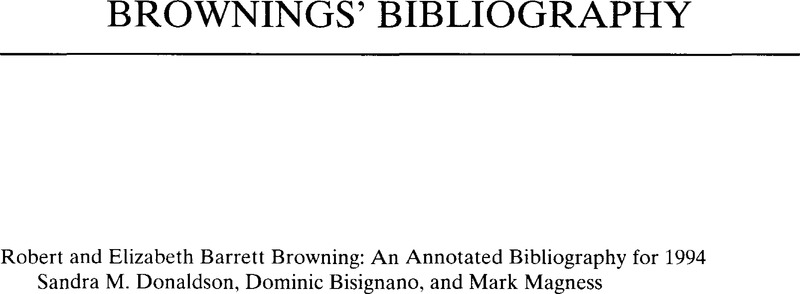C94: 5.Barrett, Dorothea. “Linguaggio e desiderio in ‘Aurora Leigh’.” Partilora,
Dimensione “D” 21–32. ¶ Notes that EBB distinguishes between the writer and her work, especially with regard to the love between her and her husband, about which we know very little. The classical epic — “masculine, affirmative, assertive and authoritative” — may be contrasted with the “private voice” of
Aurora Leigh. The language is erotic but its eroticism embraces all humanity. The language of the poem is in itself an object of desire and anticipates the work of Freud, Woolf, and modern feminist psychologists.
Google Scholar 